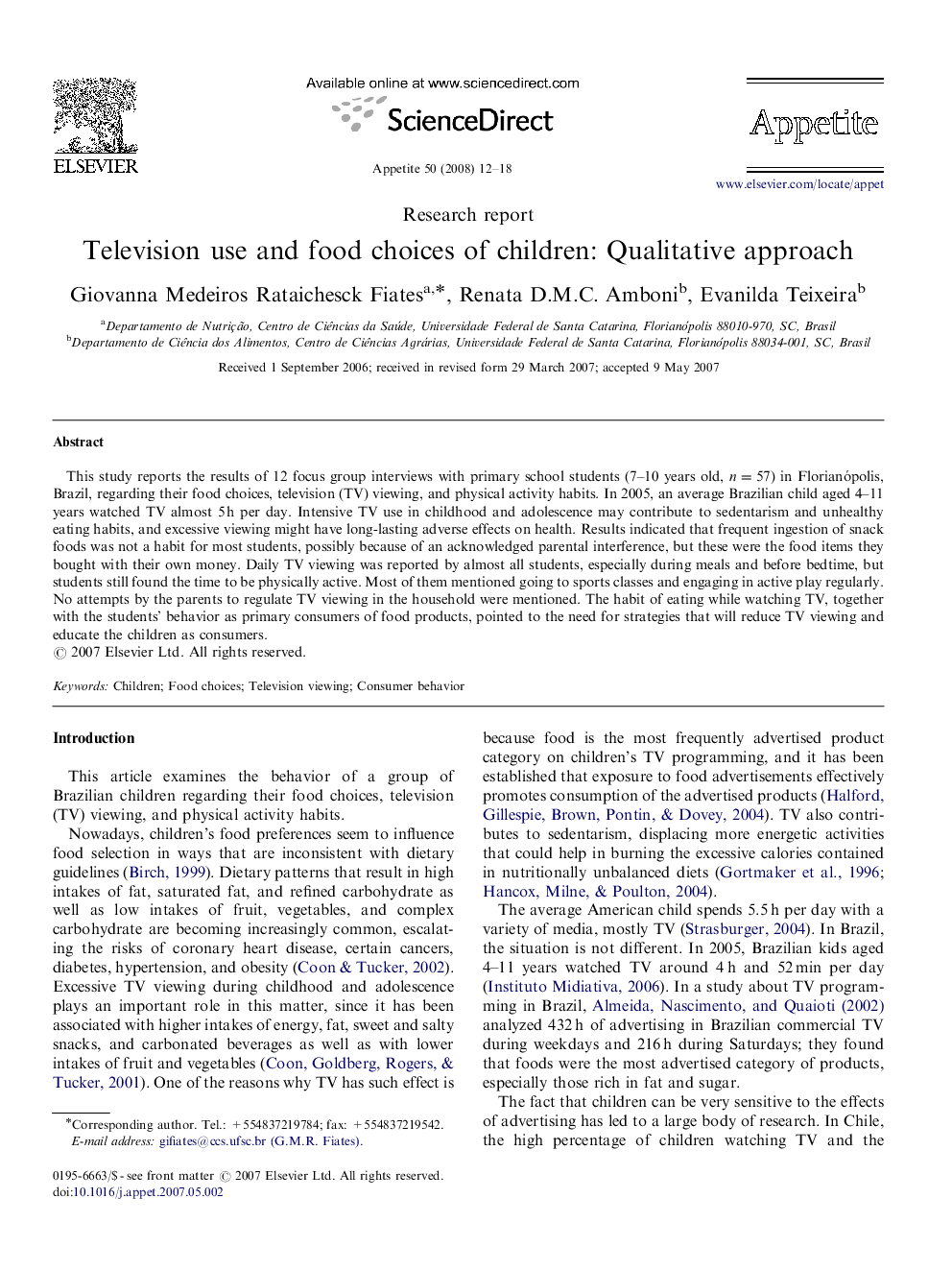| Article ID | Journal | Published Year | Pages | File Type |
|---|---|---|---|---|
| 941547 | Appetite | 2008 | 7 Pages |
This study reports the results of 12 focus group interviews with primary school students (7–10 years old, n=57n=57) in Florianópolis, Brazil, regarding their food choices, television (TV) viewing, and physical activity habits. In 2005, an average Brazilian child aged 4–11 years watched TV almost 5 h per day. Intensive TV use in childhood and adolescence may contribute to sedentarism and unhealthy eating habits, and excessive viewing might have long-lasting adverse effects on health. Results indicated that frequent ingestion of snack foods was not a habit for most students, possibly because of an acknowledged parental interference, but these were the food items they bought with their own money. Daily TV viewing was reported by almost all students, especially during meals and before bedtime, but students still found the time to be physically active. Most of them mentioned going to sports classes and engaging in active play regularly. No attempts by the parents to regulate TV viewing in the household were mentioned. The habit of eating while watching TV, together with the students’ behavior as primary consumers of food products, pointed to the need for strategies that will reduce TV viewing and educate the children as consumers.
